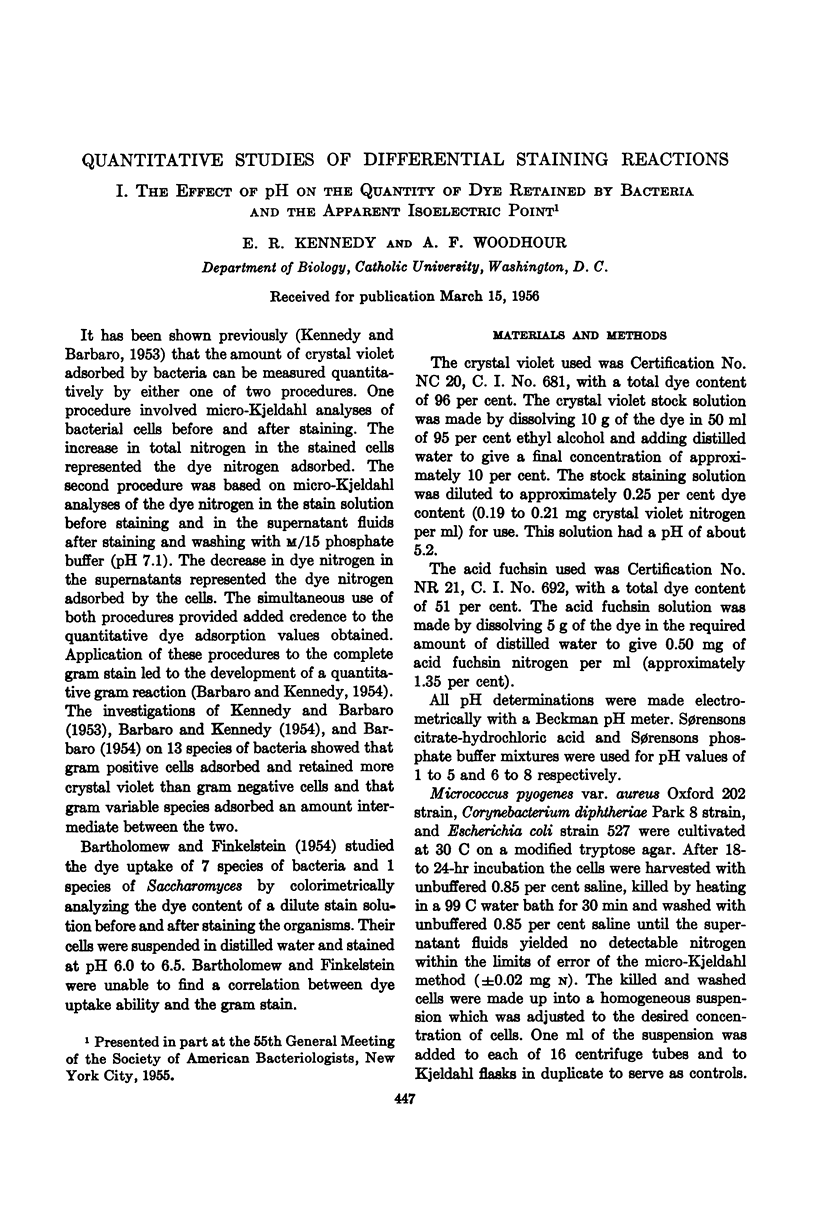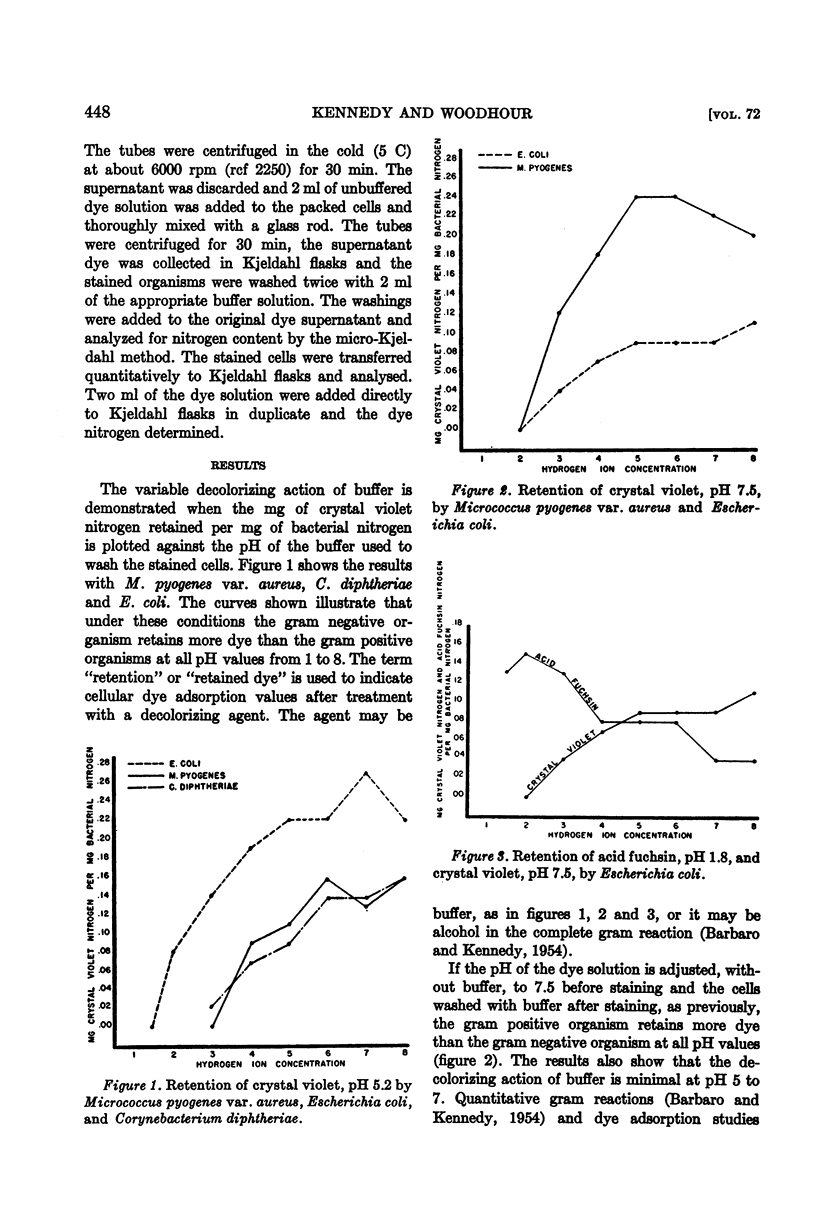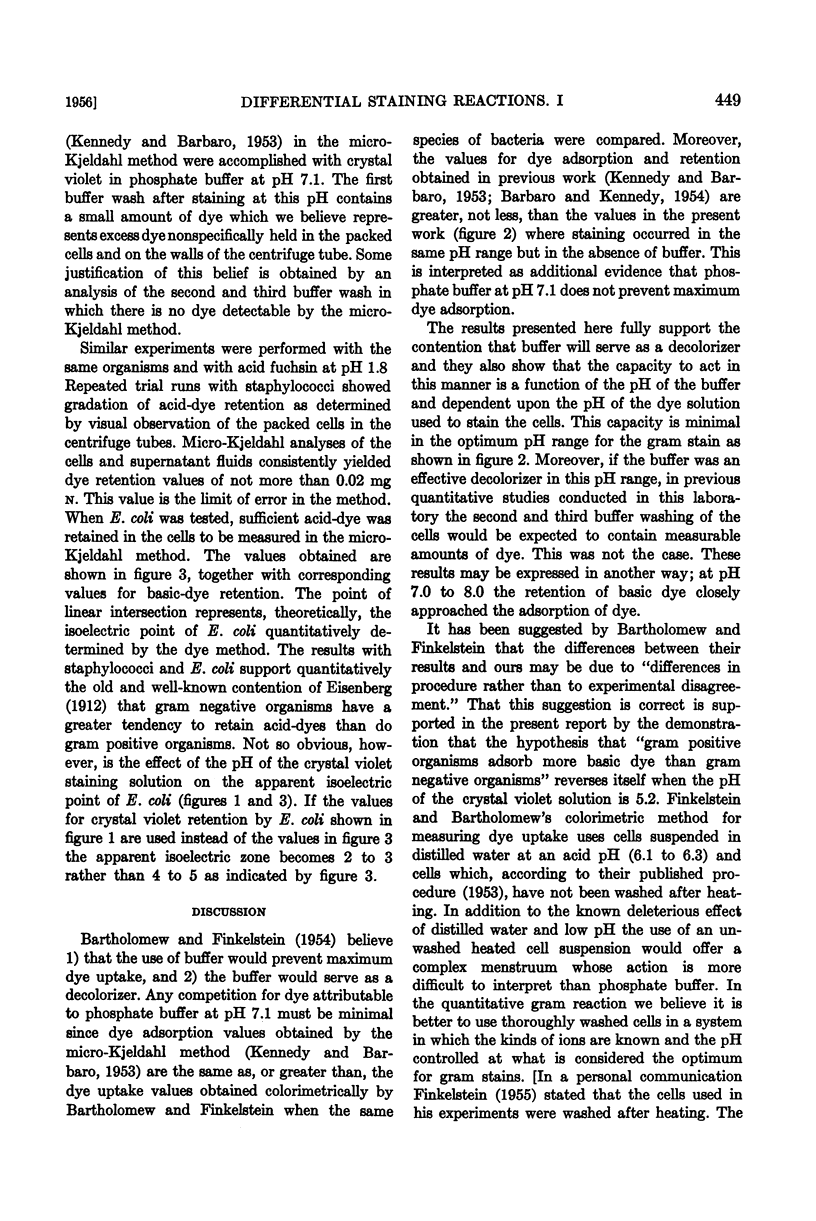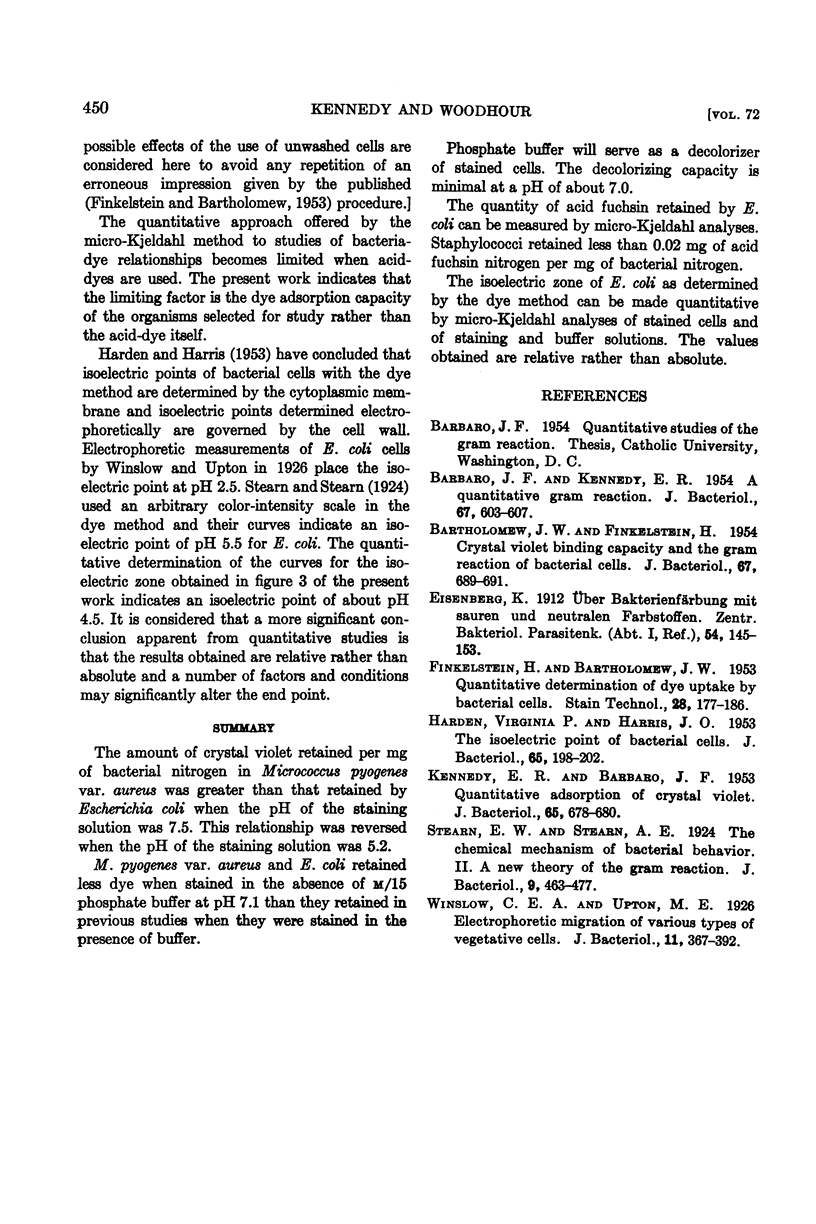Full text
PDF



Selected References
These references are in PubMed. This may not be the complete list of references from this article.
- BARBARO J. F., KENNEDY E. R. A quantitative gram reaction. J Bacteriol. 1954 May;67(5):603–607. doi: 10.1128/jb.67.5.603-607.1954. [DOI] [PMC free article] [PubMed] [Google Scholar]
- BARTHOLOMEW J. W., FINKELSTEIN H. Crystal violet binding capacity and the Gram reaction of bacterial cells. J Bacteriol. 1954 Jun;67(6):689–691. doi: 10.1128/jb.67.6.689-691.1954. [DOI] [PMC free article] [PubMed] [Google Scholar]
- FINKELSTEIN H., BARTHOLOMEW J. W. Quantitative determination of dye uptake by bacterial cells. Stain Technol. 1953 Jul;28(4):177–186. doi: 10.3109/10520295309105596. [DOI] [PubMed] [Google Scholar]
- HARDEN V. P., HARRIS J. O. The isoelectric point of bacterial cells. J Bacteriol. 1953 Feb;65(2):198–202. doi: 10.1128/jb.65.2.198-202.1953. [DOI] [PMC free article] [PubMed] [Google Scholar]
- KENNEDY E. R., BARBARO J. F. Quantitative adsorption of crystal violet. J Bacteriol. 1953 Jun;65(6):678–680. doi: 10.1128/jb.65.6.678-680.1953. [DOI] [PMC free article] [PubMed] [Google Scholar]
- Stearn E. W., Stearn A. E. The Chemical Mechanism of Bacterial Behavior: I. Behavior Toward Dyes--Factors Controlling the Gram Reaction. J Bacteriol. 1924 Sep;9(5):463–477. doi: 10.1128/jb.9.5.463-477.1924. [DOI] [PMC free article] [PubMed] [Google Scholar]
- Winslow C. E., Upton M. F. THE ELECTROPHORETIC MIGRATION OF VARIOUS TYPES OF VEGETABLE CELLS. J Bacteriol. 1926 May;11(5):367–392. doi: 10.1128/jb.11.5.367-392.1926. [DOI] [PMC free article] [PubMed] [Google Scholar]


